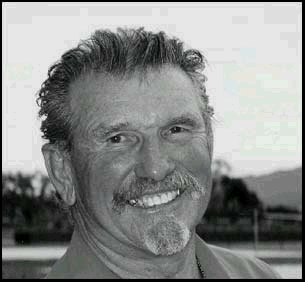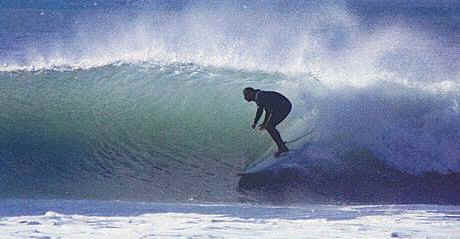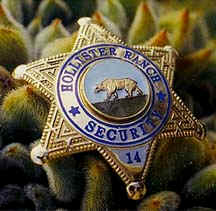|
|
|
|
| Ray Kunze | |
 |
Ray Kunze: "I've been old for a very, very long time. There was only a short period in my life when I was young."
- courtesy of
Cynthia Carbone Ward |
|
October 2, 1936 – November 5, 2004 |
|
|
Ray was off duty, but he'd stopped off at the guardhouse to pick up his uniform, and John, who had lived at The Ranch for a number of years, had something he wanted to talk over with him. I'd spoken briefly with Ray the last time we visited John and Linda Kiewit a couple of years earlier, but he still looked exactly the same - rugged, healthy and happy. It surprised me learn from his obituary that he was five years older than I was. He always looked five years younger! After John and he had finished talking business, I joined them for a few minutes. Mostly we discussed New Zealand because Ray wanted to visit Aotearoa sometime soon. Regretfully, he never got the chance ... I would have liked the opportunity to get to know him better. Requiescat in pace |
|
|
The following tribute was written for the Santa Barbara Newspress by senior writer, Scott Hadly, and is republished here with his permission. |
|
|
A life on the waves |
|
|
Legendary surfer Ray Kunze was a man of passion, principles and loyalty
|
|
| Ray Kunze, "The Malibu Enforcer," looks out from the hills above Big Drakes on the Hollister Ranch. Photos by Forrest L. Doud |
|
| Legendary surfer Ray Kunze was a man of passion, principles and
loyalty.
Hundreds converged on the Hollister Ranch on Saturday to scatter the ashes of Raymond Paul Kunze, a retired firefighter, ranch guard and iconic surf figure known as "The Malibu Enforcer." |
|
 |
A big man with a barrel chest and booming voice, he got his ominous nickname from the film director John Milius, who was part of the "Pit Crew" of surfers at Malibu in the late 1950s and early 1960s. "He was eight years older than me and like a god to a lot of us gremies. He was a tower of a guy, a fireman . . . a great surfer and this really tremendous influence," Mr. Milius said. |
|
"Plus he was the toughest guy on the beach." This was at a time when surfing was transforming from an almost cult-like fringe sport into a cultural phenomenon, and Malibu was ground zero for the explosion in beach culture. Ray surfed alongside Miki Dora, Lance Carson, Johnny Fain, David "Dewey" Weber and Mickey Munoz, men who were inventing style and performance in the sport. |
|
|
But many of his friends say that Ray's intimidating reputation missed his essence, his sense of humor and love of life. In Malibu, Ray's size alone stopped fights. He stood about 6 feet 2 inches, but his massive chest and broad shoulders made him appear bigger, Mr. Aaberg said. "He had superficially an ominous presence," he said. "But he would just arrive where people were hassling each other on the beach, and it would just stop." |
|
|
|
|
 |
During his days surfing Huntington Beach, he used to run into George "The Golden Greek" Stemple. Mr. Stemple, a firefighter, always seemed to have a wad of cash, and Ray figured he should give firefighting a try. He would surf in the morning and then drive to cities across Southern California and apply for firefighting jobs, filling out applications on a typewriter he kept in his car. He was finally hired on at Lynwood, serving during the Watts riots and through the 1960s and 1970s. During his firefighting years, Ray got married, and the couple had two children, Paul, now 36, and Kim, 34. But the marriage didn't last long. |
|
"My father and mother were just two good people who were not meant to be together," Paul Kunze said. |
|
| More
tributes, memorials and articles:
|
http://www.zacatecanyon.com/Interviews/kunze.htm
http://www.niceness.org/surf/ray/ http://www.silcom.com/~pordecon/ray.htm
|
| Classic interview: | http://www.zacatecanyon.com/Interviews/kunze-interview.htm |